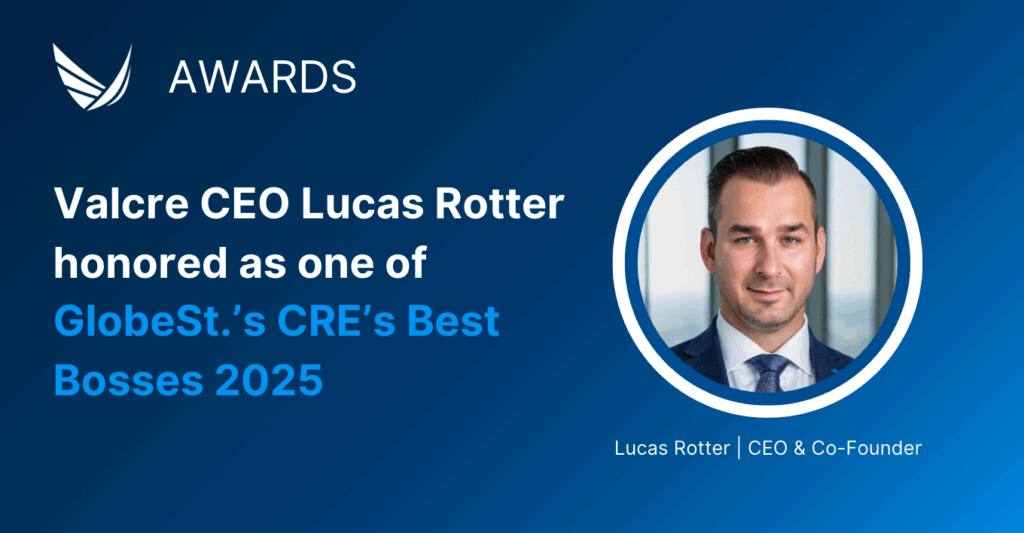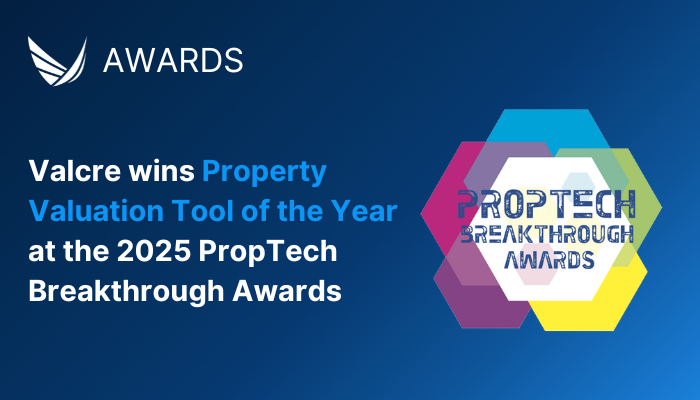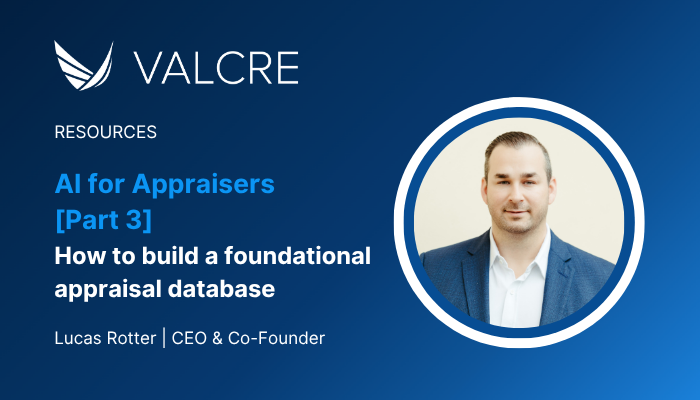![AI for Appraisers [Part 4]: Managing change for a successful AI rollout](https://www.valcre.com/wp-content/uploads/Blog-featured-image-–-AI-Content-Series-May-2025-8.png)
AI is now front and center for the appraisal profession. From webinars to conferences, the topic of AI dominates. And for good reason – we know that implementing a digital strategy that incorporates AI is a top priority for appraisal leaders in 2025. Yet, Valcre understands that while most recognize the importance of incorporating AI into their business, there is a lot of uncertainty about how to take the first step and get started.
To help, we’ve put together this blog series:
- Part 1: Explored how AI can streamline appraisal businesses – both from a general business operations and appraisal workflow perspective
- Part 2: Covered the three core principles appraisers can use when evaluating trustworthy and effective potential AI vendors
- Part 3: Outlined how to build the foundational database required for AI to work
Now in Part 4 and our final article, we’ll address a critical but often overlooked piece of the puzzle: Managing change across your team to ensure AI implementation actually succeeds.
Change management: why is it so important?
Let’s say you’ve gone to the enormous effort of cleaning up your data and storing it in a database that is accessible and highly valuable to everyone across your team. These efforts can soon be wasted if your team isn’t capturing data correctly, or complying with good data hygiene practices. And if your database isn’t maintained properly, then any AI you build on top of it could be compromised from the outset.
Unfortunately, it’s not uncommon for technology projects to fail. In fact, according to McKinsey, it happens in the case of 70 percent of digital transformation projects, for a multitude of reasons. Some of the most common causes include an internal resistance to change and an overemphasis on technology at the expense of process and people.
This is not necessarily surprising, particularly for the appraisal profession. For many appraisers who have been operating the same way over many years with considerable success, it will likely take some convincing that this new way of operating will benefit them personally. For others who have been exposed to glitchy systems in the past without appropriate support, there may be a certain reticence to get excited about a new, unproven software. Success hinges on how well you bring your people along for the ride.
Happily, it doesn’t have to be this way. And it all starts with the way you roll out the changes to your people.
Three key steps to leading successful technology change
At Valcre, we’ve seen firsthand how appraisal firms succeed (or struggle) when rolling out new systems. Based on those learnings, we recommend focusing on three key levers:
1: Clear, ongoing communication from leadership
People don’t fear change, they fear surprise. Rolling out new technologies and processes can be disconcerting for employees. And if no information is supplied as to why the change is happening, your employees will fill the vacuum themselves. This rarely sets up a technology project for success.
We recommend communicating the change in a variety of different forums, starting from the top:
- All-hands announcement: Launch with a company-wide meeting. Share why the change is happening, how your team will benefit, and what the rollout timeline looks like. Be prepared to take questions from your team members and walk them through the various ways you’ll be investing in upleveling them, to ensure their success.
- Written follow-up: Reinforce the message with a written communication via email (or your organization’s preferred communication method). This will give team members a resource to refer back to if they have questions or didn’t process the news fully during your presentation.
- Team-level briefings: Help managers translate the high-level vision into practical implications for their teams. Your new database and subsequent AI tools might have different uses for different teams. These conversations should be more practical in nature and focus on how the changes will make their daily work easier and more impactful.
- Regular Updates: Keep momentum by sharing progress reports, success stories, and upcoming milestones as implementation continues. Bring them on the journey with you.
2: Hands-on training and ongoing support
The best change strategies invest just as much in people as they do in technology.
Your team needs structured training to build confidence with your new tools. Look for a technology partner that has a training program to teach your team how to use your new software as quickly and effectively as possible. In the case of your new database, it’s imperative that they know how to enter new data, where it goes, and how to access and use it.
One-off seminars won’t cut it. Instead, look for programs that:
- Offer multi-session curriculums with clear objectives
- Include hands-on practice and real-time feedback
- Provide accessible support channels for quick help when issues arise
At Valcre, we run a series of four live virtual training sessions with practical homework in between. Each session builds on the last, with space to apply learnings and bring questions.
3: Identify and celebrate power users
Nothing builds momentum like seeing a colleague succeed with a new tool.
To accelerate adoption, it can be powerful to find a few tech-savvy people within your organization and showcase how they’re using your new database and AI tools – the use cases and most importantly, success stories.
Find early adopters and give them the spotlight:
- Invite them to share their success stories during team or company-wide meetings
- Have them demo how they’ve used the new database or AI tools to save time, find better comps, or improve a report
- Encourage peer-to-peer learning and open Q&A
This bottoms-up/grass roots communication, paired with top-down communication from leadership will ensure your team knows the importance of the project, as well as give them confidence that the new technology will work for them.
Your roadmap to AI success
Change isn’t easy. But with intentional communication, dedicated training, and the right internal champions, your firm can adopt AI successfully and build a more efficient, productive, and scalable appraisal business.
And that’s what it’s all about:
- Higher-quality reports
- Faster turnaround times
- A competitive edge in an evolving market
Valcre is here to support you at every stage. If you’d like to learn more about how we can lead you through this transition, or how we’re working with other appraisal teams to get their databases up and running so that they can leverage the benefits of AI and other technologies, request a demo to talk to the team today.


